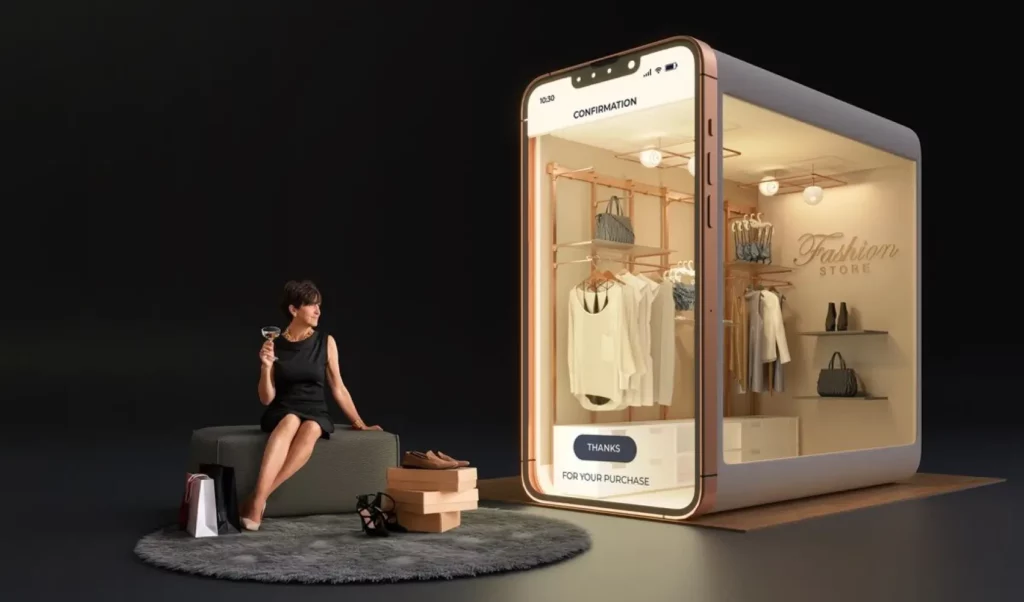Consumer Behavior Trends Changing Over the Years
Hello, savvy marketers and curious readers! Ever wondered how we transitioned from barter trade to one-click buying? Well, you’re in for a treat. This article aims to explore the dramatic change in consumer behavior over the years, shedding light on the influence of new customer preferences and their significant impact on consumer habits.
The Historical Perspective
Pre-Industrial Age
In ye olden times, the consumer landscape was largely characterized by necessity rather than choice. With limited products and localized markets, the focus was merely on survival.
Industrial Revolution
Fast forward to the 19th century, the era of mass production! Factories churned out goods at unprecedented rates, suddenly flooding markets with choices galore.
Post-War Consumerism
Then came the post-WWII era, the golden age of consumerism. Advertising took center stage, influencing the masses and driving sales.
The Digital Age: Transforming Consumer Behavior
E-commerce Revolution
In the comfort of our PJs, we’ve bid adieu to traditional shopping. The rise of e-commerce has been nothing short of a consumer behavior revolution in 2023.
The Power of Social Media
Platforms like Instagram and Twitter have turned us into more than just shoppers; we’re now influencers, critics, and brand ambassadors shaping the market.
Technological Marvels Big Data Insights
Retailers have become digital Sherlock Holmes, deciphering our preferences before we even recognize them. Thanks to Big Data, companies can predict consumer desires like never before.
AI and Machine Learning Magic
Ever had that eerie feeling that Google knows what you want before you even type it? Welcome to the world of AI and machine learning, where personalization reigns supreme, all thanks to clever algorithms. This technological advancement is shaping new consumer behavior.

The Changing Tide: Understanding the Biggest Consumer Behavior Changes in 2023
Consumer Preferences Take Center Stage
Consumer preferences have shifted significantly, with more people preferring the convenience of online shopping over traditional brick-and-mortar stores. This transformation is driven by a desire for seamless experiences, extensive product choices, and the ease of comparison offered by e-commerce platforms.
Redefining Consumer Demand
The digital age has also redefined consumer demand. With the accessibility of e-commerce, consumers now expect instant gratification and swift delivery of products and services. This change has forced businesses to adapt their supply chains and delivery models to meet these evolving demands.
Product and Service Discovery
Consumers today rely heavily on digital channels to discover new products and services. Social media platforms, search engines, and online marketplaces play a pivotal role in influencing consumer choices. As a result, businesses are allocating a significant portion of their marketing budgets to these digital channels to capture consumer attention and drive sales.
The Power of Reviews and Recommendations
Consumers have become more discerning in 2023, relying on peer reviews and recommendations from trusted sources before making purchasing decisions. Online reviews and ratings hold immense sway over consumer behavior, making online reputation management a critical aspect of business strategy.
Adapting to the New Normal
Businesses that recognize and adapt to these consumer behavior changes in 2023 are poised for success. Embracing e-commerce, leveraging digital marketing, and investing in technology-driven personalization are just a few strategies companies are employing to thrive in this dynamic landscape.
As we journey further into the digital age, staying attuned to evolving consumer preferences and behavior is the key to staying competitive in the marketplace. We are witnessing profound shifts in how consumers shop, interact with brands, and make purchasing decisions, and those who understand and navigate these changes stand to prosper in this new era of consumer behavior.
Changing Social Norms

The Influence of Millennials and Gen Z
Millennials and Gen Z are reshaping the way we shop and conduct transactions, particularly in the years 2021 to 2022, and now in 2023, this trend is accelerating further. With the rise of technology, digital payments have become the norm for these generations. They no longer rely on cash or traditional methods, but instead prefer the convenience and security of shopping online. Additionally, conscious consumerism is shaping their shopping habits.
Millennials and Gen Z are more conscious of the products they purchase, opting for sustainable and ethical options. They prioritize companies that align with their values and actively seek out brands that are socially responsible. This shift towards conscious consumerism is not only changing the game for retailers but also leaving a significant impact on consumer behavior and consumer trends as a whole. As these generations continue to dominate the consumer market, businesses need to adapt and meet their evolving demands. Millennials and Gen Z are driving change, and their shopping habits are redefining the rules of the game. on consumer behavior
Sustainability
“Green” is the new black. Modern consumers are not just buying products; they’re buying into ideologies. In today’s world, the concept of “green” has become the new black. With increasing awareness of environmental issues, modern consumers are no longer simply interested in buying products; they are buying into ideologies.
The focus has shifted from merely purchasing items to supporting brands and companies that align with their values and beliefs. Consumers are consciously seeking out eco-friendly and sustainable options, whether it be renewable energy sources, organic ingredients, or sustainable packaging. The desire to make a positive impact on the environment has become a significant factor in purchasing decisions.
Companies are responding to this shift by incorporating environmentally-friendly practices into their operations and marketing strategies. From promoting recycling initiatives to implementing energy-efficient technologies, businesses are adapting to cater to the growing demand for “green” products. This change in consumer behavior reflects a shift in societal priorities, emphasizing the importance of sustainability and responsible consumption in shaping the future.

How Businesses Have Adapted To New Consumer Trends
Embracing Personalization
Consumers are no longer content with being just another face in the crowd. They crave unique experiences and individualized interactions. Recognizing this shift, businesses have wholeheartedly embraced personalization techniques.
From tailored product recommendations based on browsing history to personalized marketing messages addressing individual preferences, personalization has become the cornerstone of engaging consumers in this new era.
Omnichannel Strategies for the Win
Today’s consumers are everywhere—online, offline, and everywhere in between. They demand the flexibility to shop when and where they please. To meet this demand, businesses have adopted omnichannel strategies that provide a seamless shopping experience across multiple platforms and touchpoints. Whether it’s through physical stores, websites, mobile apps, or social media, companies are making sure that consumers can engage with their brand anytime and anywhere.
Staying Competitive in a Shifting Landscape
In the face of ever-evolving consumer sentiment, businesses are continually adapting to maintain a competitive advantage. Understanding and identifying consumers’ new beliefs and preferences have become critical parts of decision-making processes. Businesses that have recognized these shifts and adapted accordingly are reaping the rewards of customer loyalty, increased sales, and a competitive edge in the market.
The Pandemic Effect
If 2020 was a movie, it’d be a thriller. The COVID-19 pandemic has drastically accelerated the shift toward online shopping and contactless payments. With physical stores shutting down and consumers forced to stay at home, e-commerce platforms and online retailers experienced a surge in demand. Companies that had previously been hesitant to invest in their online presence quickly realized the importance of having a strong digital presence.
Additionally, the fear of transmitting the virus through physical currency led to a rapid increase in contactless payments. Many consumers began using their smartphones and other digital payment methods to avoid handling cash or touching payment terminals. This change in consumer behavior has not only transformed the way we shop but has also paved the way for new technologies and innovations in the payment industry.
The pandemic has undeniably left its mark on the world, forever changing the way we interact with businesses and conduct financial transactions.
Predictions for the Future
From VR shopping experiences to AI-driven personal shoppers, the future looks more integrated and personalized than ever.

Conclusion
So there you have it, a whirlwind tour of the consumer behavior evolution. As times change, so do we, and so do our buying habits. Buckle up because the future is going to be one heck of a ride!
Frequently Asked Questions
- How has technology influenced consumer behavior?
- Technology has personalized the buying experience, making it more convenient and tailored.
- What is the role of social media?
- Social media acts as a platform for consumers to be critics, influencers, and advocates.
- How have businesses adapted to changing consumer behavior?
- Businesses have adopted personalization and omnichannel strategies.
- Has the COVID-19 pandemic had a long-term impact?
- Yes, the shift toward online shopping and contactless payment methods is likely to stay.
- What does the future hold for consumer behavior?
- Expect more technological integration and personalization.











